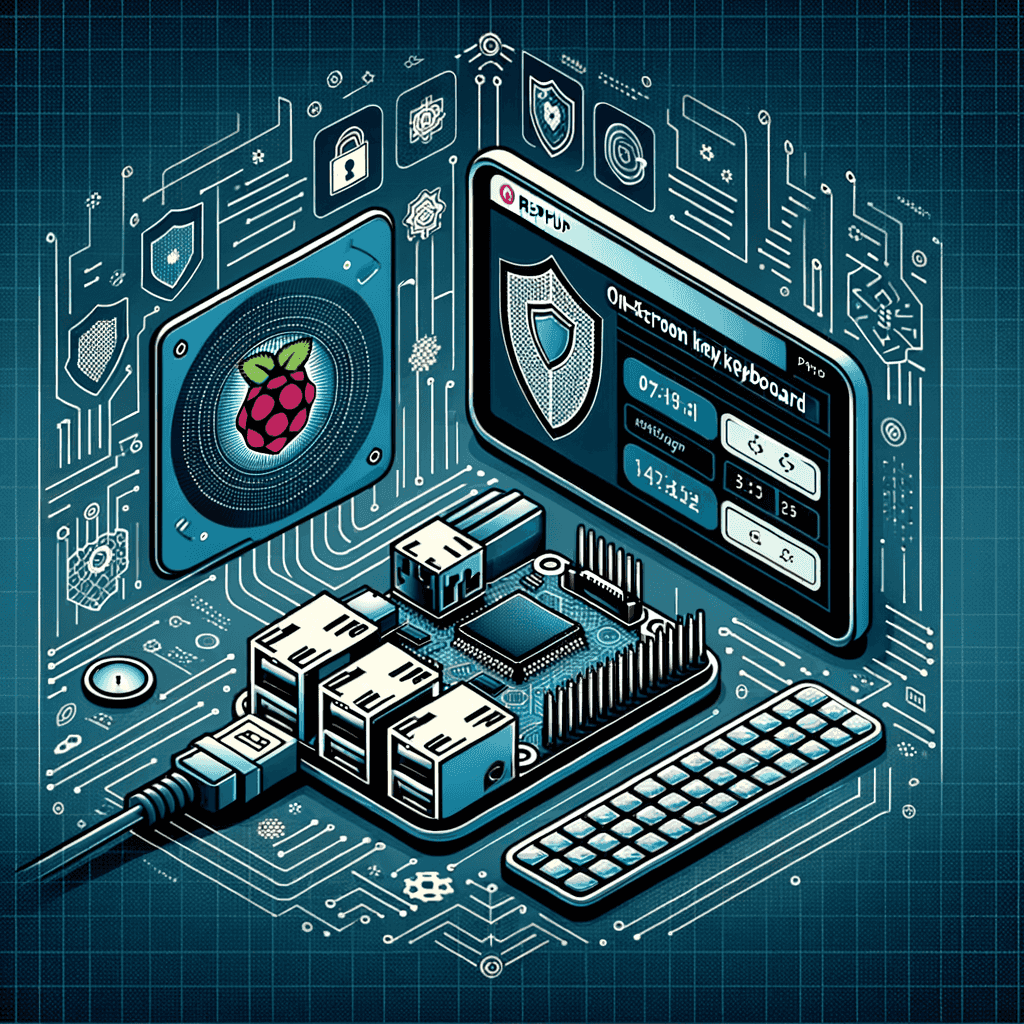- The Impact and Signs of Videostream Malware
- How Videostream Malware Spreads
- Steps to Detect and Remove Videostream Malware
- Steps to Prepare Before Removal of Videostream Malware
- Is Videostream a Virus and Can It Be Dangerous?
- How to Protect Your System from Videostream?
- Maintaining a Videostream Malware-Free System
Imagine this: you're watching your favorite show online when suddenly, everything slows down. Pop-ups flood the screen, and your video is unwatchable. Frustrating, right? Now, what if these annoyances weren't just random glitches, but signs that your computer's security is at risk? That could be Videostream malware at work.
You might wonder, "What exactly is Videostream malware?" It's a sneaky software that disrupts your streaming experience and puts your digital life in jeopardy. But don't worry, you're not alone in this struggle. Many people face the same issue, often without knowing the cause.
The good news is that you can fight back. This article is your ally, offering easy-to-follow steps to identify, remove, and prevent this digital pest. No jargon, no confusion – just clear guidance to help you reclaim your online peace. So, let's roll up our sleeves and get your computer back to a safe, Videostream malware-free environment. Your digital security is important, and today, you'll learn how to protect it.
The Impact and Signs of Videostream Malware
Ever wondered why your computer suddenly feels like it's running a marathon with a heavy backpack? Or why you're seeing a flood of pop-ups and ads that weren't there before? These could be signs of Videostream malware doing its dirty work. Let's break down the impacts and signs of this pesky malware.
Personal Data
First, let's talk about your personal data. Videostream malware is a sly fox. It can collect your browsing history, search queries, and even your IP address. Worse, it can steal your login credentials and credit card information. Imagine a stranger having access to your personal emails or your bank account. Scary, right?
System Performance
Now, let's move on to your system performance. Videostream malware can make your computer slow and unresponsive, like it's stuck in a time warp. It can cause your computer to crash or freeze, disrupting your work or play. It's like having a car that stalls in the middle of the highway. Not fun at all.
You might also experience unexpected system slowdowns. Your computer might run slower than usual, and your web browser might take forever to load pages. It's like waiting for a snail to cross the road. And who has time for that?
Unusual Pop-ups and Ads
Lastly, let's talk about those unusual pop-ups and ads. Videostream malware can cause your web browser to display unwanted pop-ups and ads. It can even redirect your browser to malicious websites or install additional malware on your computer. It's like having a stranger take over your TV and change the channels without your permission.
In a nutshell, Videostream malware is a digital nuisance that can wreak havoc on your personal data and system performance. But remember, knowledge is power. By knowing the signs, you can take steps to remove this malware and protect your digital life.
How Videostream Malware Spreads
Ever wondered how Videostream malware finds its way into your computer? It's like a sneaky burglar, always looking for a way in. Let's talk about how it spreads.
First up, infected websites. You know those sketchy websites that look like they were made in the '90s? Or those that offer free downloads of the latest movies or software? Those are prime breeding grounds for Videostream malware. When you visit these sites, the malware can sneak into your computer like a ninja in the night. It's like stepping on a rusty nail - you don't see it, but it can cause a lot of damage.
Next, let's talk about email attachments. You've probably heard this before, but it's worth repeating: Be careful with email attachments, especially from unknown senders. Videostream malware can hide in these attachments, waiting for you to download and open them. It's like opening a gift box, only to find a nasty surprise inside.
So, whether you're surfing the web or checking your emails, always be on the lookout for Videostream malware. It's a digital pest that can sneak in through the smallest cracks. But with a little caution, you can keep it at bay.
Steps to Detect and Remove Videostream Malware
Alright, so you've got a Videostream malware problem. Don't worry, we've got your back. Here's how you can detect and remove it.
First, let's talk about antivirus software. These are like your personal digital bodyguards. They scan your computer for any signs of Videostream malware and kick it out. There are many options out there, so pick one that suits you best.
Now, if you're feeling a bit more adventurous, you can try manual detection. This is like playing detective. You'll need to check your computer's files and programs for anything suspicious. Look for anything you don't remember installing or files that seem out of place.
Once you've found the culprit, it's time to uninstall the malicious programs. This is like evicting a bad tenant from your property. Just go to your control panel, find the program, and hit uninstall.
But we're not done yet. To make sure the Videostream adware is completely gone, we recommend using Malwarebytes Free. It's like a second pair of eyes, making sure no traces of the malware are left behind.
Next, double-check for malicious programs with AdwCleaner. This is like doing a final sweep of your house after a party, making sure no unwanted guests are hiding in the corners.
Finally, reset your browser settings to remove any Videostream pop-up ads. This is like giving your house a fresh coat of paint after a renovation. It ensures that your browsing experience is clean and free from annoying pop-ups.
So there you have it. With these steps, you can detect and remove Videostream malware from your computer. Just remember, it's always better to be safe than sorry. Stay vigilant and keep your digital space clean.
Steps to Prepare Before Removal of Videostream Malware
Before we dive into the removal process, we need to prepare. Think of it like getting ready for a big clean-up. You wouldn't just jump in without a plan, right? Here's what you need to do.
Scan your system for Videostream files. It's like looking for clues before you start cleaning. Use an anti-malware software to help you with this. It's your digital magnifying glass.
Uninstall Videostream and remove any related files and objects. This is like finding the source of the mess and getting rid of it. Remember to delete any temporary files where the malware might be hiding. It's like checking under the rug for any dirt.
Tackle the browsers. We need to remove any Videostream-related extensions from Safari, Chrome, and Firefox. It's like cleaning out the cupboards. Make sure to reset the browser settings to avoid any malware redirection.
Check for any suspicious programs that might be spyware. It's like looking for any hidden mess. Uninstall them if you find any.
If you're using a Mac, delete any malicious profiles and apps. It's like making sure your house is secure. Run a scan with Malwarebytes for Mac to help you with this.
Use Windows Defender offline scan if you're on a Windows system. It's like having a security guard check your house before you enter. This will detect and remove any malware before the system starts.
Remember, patience is key here. It might take a while, but it's worth it. With these steps, you'll be well-prepared to remove the Videostream malware. So let's roll up our sleeves and get started.
Is Videostream a Virus and Can It Be Dangerous?
Let's get this straight - Videostream is not a friend. It's a potentially unwanted program that can make your browsing experience a nightmare. It's like an uninvited guest who messes up your house and doesn't want to leave.
But is Videostream a virus? And can it be dangerous? Let's find out.
First things first, can Macs get viruses? Yes, they can. It's a myth that Macs are immune to viruses. They are less likely to be infected than Windows computers, but they are not invincible.
Now, what are the symptoms of Videostream on Mac? It's like having a cold - you'll notice some signs. Your web browser’s default search engine might change to VideoStream Search. Your browser’s search queries may be redirected through VideoStream Search. And the “VideoStream” browser extension or program might be installed on your Mac.
Videostream is a type of adware, which is like a pesky fly buzzing around your head. It displays intrusive pop-up ads and slows down your internet browsing. It can also manipulate the settings of your internet browser, forcing you to visit the hijacker’s website and conduct internet searches using their search engine.
But Videostream is not the only threat to Macs. There are other types of Mac threats, like viruses, trojans, worms, and ransomware. It's like living in a neighborhood with different types of criminals.
So, what should you do if you have a Mac virus, like Videostream? Don't panic. You can use antivirus software to scan your computer and remove the malware. It's like calling the police when there's a burglar in your house.
To remove Videostream from your Mac, you can follow the steps provided in the malware removal guide. It includes instructions for removing malicious profiles, deleting malicious apps, resetting browsers back to default settings, and running a scan with Malwarebytes for Mac to remove malware.
So, is Videostream a virus? Not exactly, but it can be just as annoying and potentially harmful. It's like a thief who doesn't steal your stuff but makes a mess of your house. But with the right tools and steps, you can kick it out and keep your Mac safe.
How to Protect Your System from Videostream?
So, you've kicked Videostream out of your Mac. Great job! But how do you keep it from coming back? Here's how you can protect your system from Videostream and other similar threats.
First, practice safe browsing. It's like driving - you need to follow the rules to stay safe. Use a reputable antivirus software and keep it updated. Avoid downloading software from shady websites. Be cautious when opening email attachments or clicking on links in emails. Use a pop-up blocker to prevent unwanted pop-ups. And be wary of free software offers - they might be too good to be true.
Next, keep your system updated. It's like keeping your house in good repair to prevent burglars from breaking in. Regularly update your operating system and software with the latest security patches. Use a firewall to block unauthorized access to your computer. And disable automatic downloads in your browser settings.
Also, secure your data. It's like locking your valuables in a safe. Use strong passwords and two-factor authentication for your accounts. Use a password manager to generate and store strong passwords. Regularly back up your important data to an external hard drive or cloud storage. Use encryption to protect sensitive data on your computer.
And finally, be careful when using the internet. It's like walking in a bad neighborhood - you need to be alert. Use a virtual private network (VPN) when browsing the internet. Use ad-blocking software to prevent malicious ads. And be cautious when using public Wi-Fi networks - they might not be secure.
Remember, prevention is better than cure. By following these steps, you can keep Videostream and other threats at bay. It's like having a strong security system for your house - it gives you peace of mind.
Maintaining a Videostream Malware-Free System
Keeping your system Videostream malware-free is like maintaining a clean, healthy lifestyle. You've got to stick with it, and it's easier than you might think. Here's how you can maintain a Videostream malware-free system.
First, make regular system scans a habit. It's like brushing your teeth - you need to do it regularly to prevent problems. Use a good antivirus software to scan your system at least once a week. Keep your antivirus software updated so it can spot the latest threats. It's like getting a regular check-up to catch any health issues early.
Second, don't ignore software updates. It's like eating your veggies - they might not be your favorite, but they're good for you. Software updates patch security holes that malware can sneak through. So, turn on automatic updates to keep your system in top shape. It's like keeping your home well-maintained to deter burglars.
Third, remove any bad apples. If you spot any suspicious profiles or apps, get rid of them. It's like throwing out spoiled food - it's not good for you and can make you sick. Regularly check your system for anything that doesn't belong. It's like decluttering your home to keep it clean and tidy.
Fourth, reset your browsers back to their default settings. It's like washing your dishes - it gets rid of any leftover grime. Clear your browser cache and cookies regularly to keep them clean. Use an ad-blocker to block any ads that might carry malware. It's like using a water filter to keep your drinking water clean.
And finally, be smart when using the internet. Only download software from trusted sources. Avoid clicking on suspicious links or downloading attachments from unknown sources. Learn about the latest malware threats and how to protect your system from them. It's like staying informed about the latest health tips to keep yourself healthy.
Remember, maintaining a Videostream malware-free system is a continuous process. But with these steps, it's a breeze. It's like living a healthy lifestyle - it might take some effort, but it's worth it in the end.









